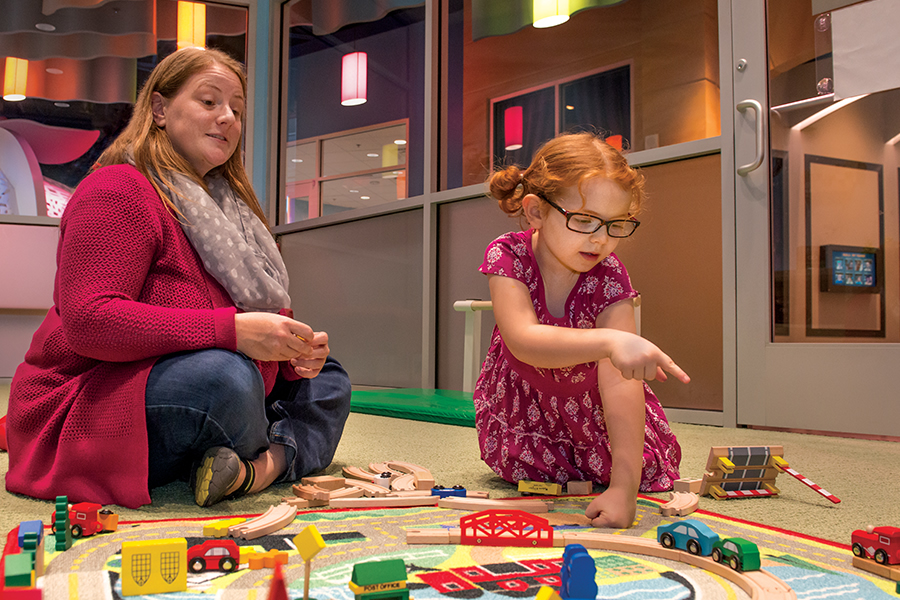
Social Studies
Research: UTSA and local children’s museum partner to bring “living” laboratory to the Alamo City
By Michelle Mondo
Do children repay acts of kindness? Can they read body language to figure out who is in charge? Does it always feel good to get what you want? Those are just a few of the questions about child development that have been tackled through research as part of the Living Laboratory initiative, which has now come to San Antonio’s DoSeum through a partnership with UTSA’s College of Education and Human Development.
And while the word laboratory may sound ominous, it’s anything but. A small room on the first floor of the children’s museum will house UTSA researchers, who will in turn ask families visiting the museum if they would like to take part in studies that usually will take about 15 minutes. “We are going to be looking at current research about children and families and use the lab to replicate that on a larger scale,” says Mari Riojas-Cortez, chair of the interdisciplinary learning department. “We’re in the preliminary stages, and we know it will evolve over time.”
The Living Laboratory began at the Museum of Science in Boston and has grown to include a community of 600 institutions, museums, and universities that share information about their cutting-edge research, according to Marta Biarnes, the co–principal investigator of the national Living Laboratory project. “Now we have the DoSeum and UTSA as part of our community,” she says, “and it’s the only collaboration of its kind in San Antonio.”
It is only the second overlapping partnership in Texas, with the other at UT Arlington, according to Living Laboratory. With its project, UTSA joins universities such as Yale, Johns Hopkins, and Carnegie Mellon. After recruiting doctoral and graduate students, UTSA has already started its pilot studies at the DoSeum.
Ryan Smith, the DoSeum’s vice president for education, says the fit was a natural one because of the past collaboration the university has had with the museum (formerly the San Antonio Children’s Museum). “Our three target audiences are kids from birth to 10 years old, their caregivers, and educators,” Smith says. “With the living lab, caregivers will get direct access to research on early learning, and kids will be able to interact with toys in the research study. Our museum educators and UTSA educators will also be able to learn from one another.”
Previously, COEHD professors developed curriculum for the museum, applied for grant funding to take area elementary school math classes to the museum, and sent students to volunteer.
